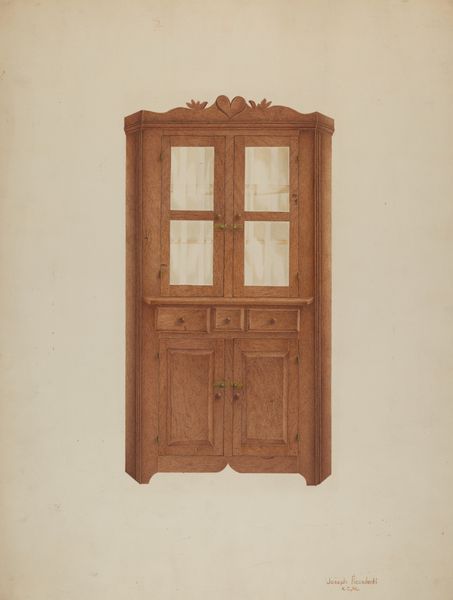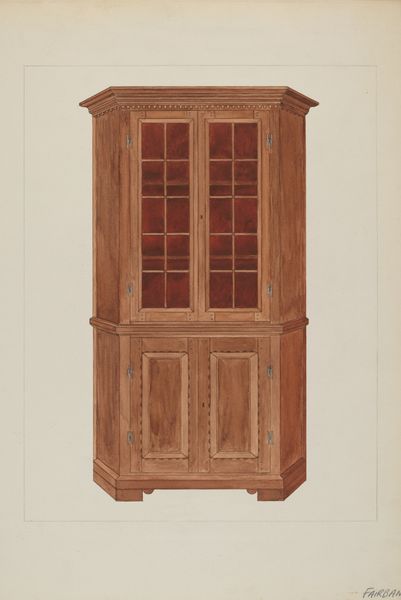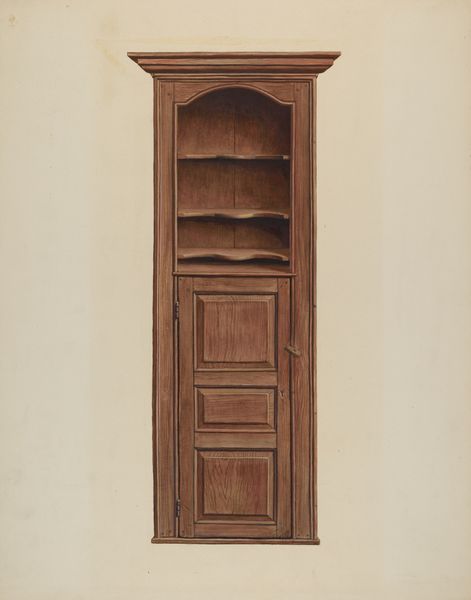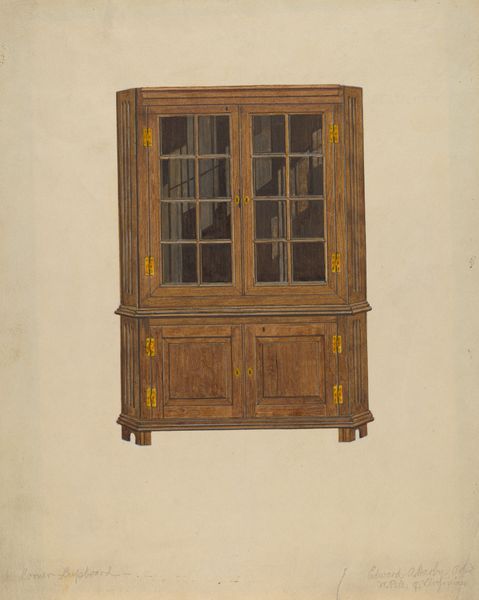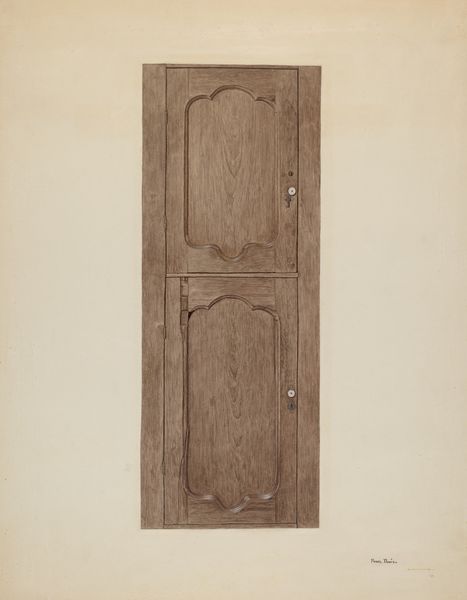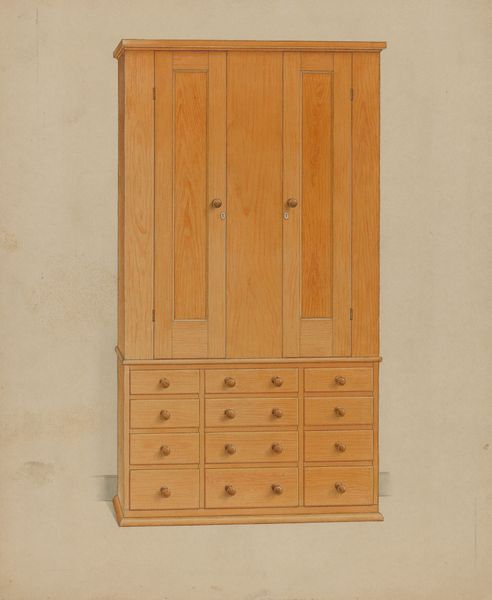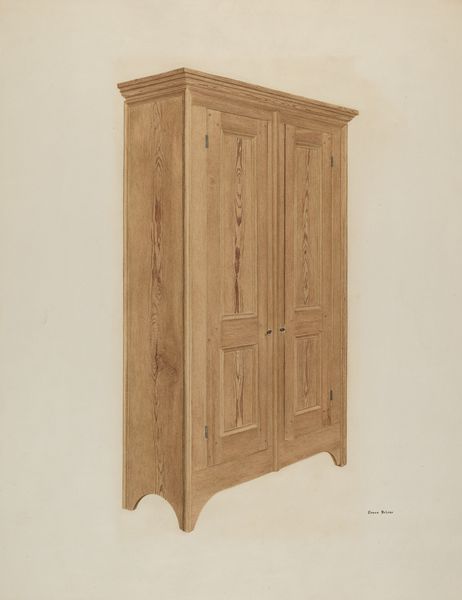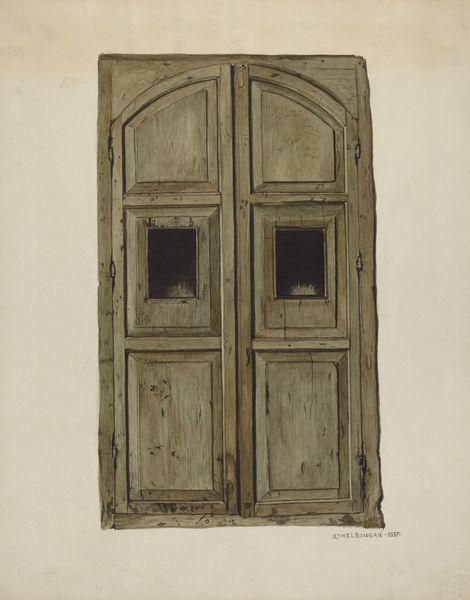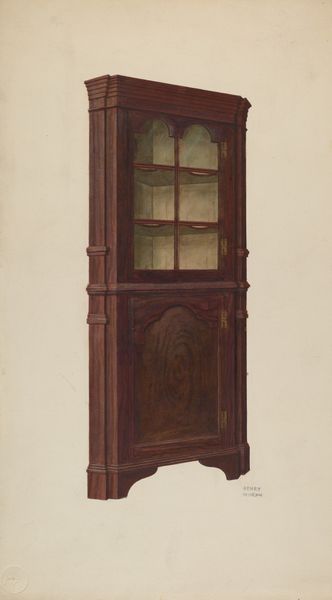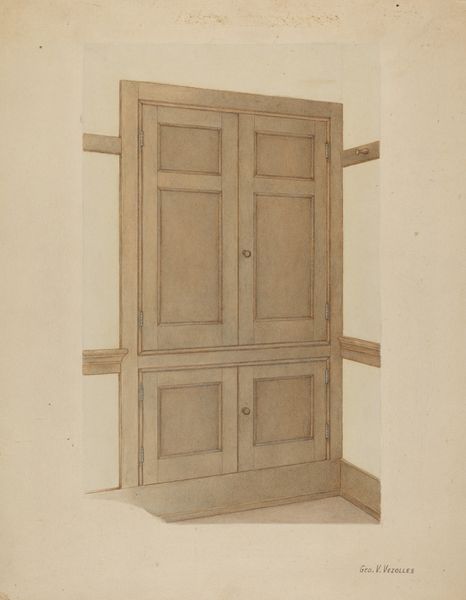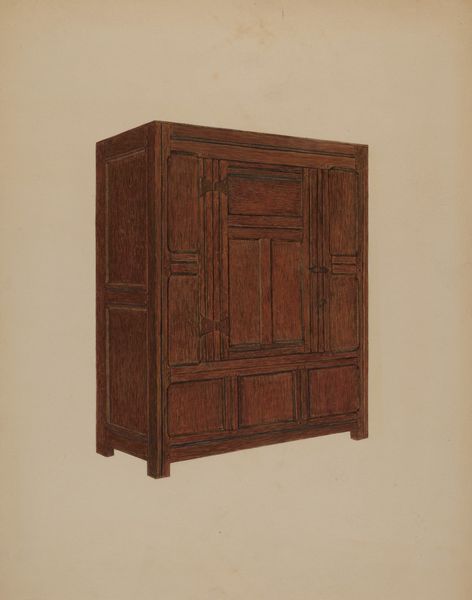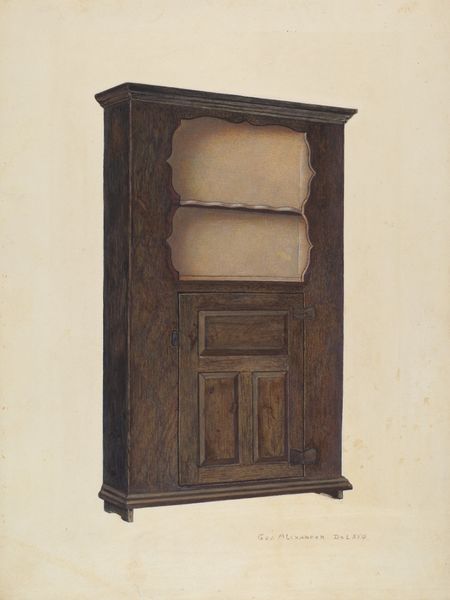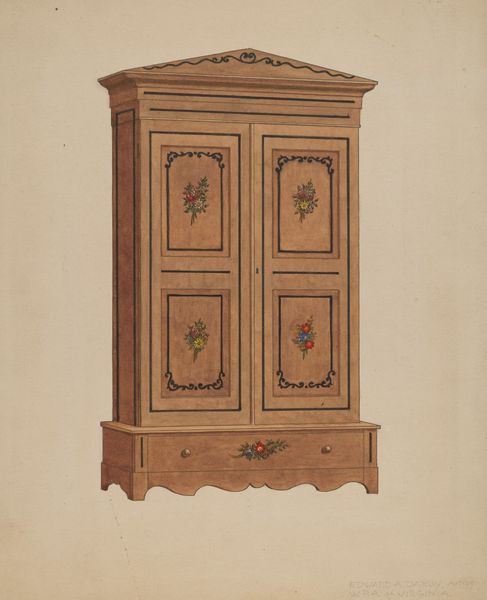
drawing, paper, pencil
#
drawing
#
paper
#
pencil
#
watercolor
#
realism
Dimensions: overall: 45.9 x 35.5 cm (18 1/16 x 14 in.) Original IAD Object: 7'6"high; 3'4 1/2"wide; 28"diagonal
Copyright: National Gallery of Art: CC0 1.0
Editor: Here we have Grace Bolser’s “China Closet,” created around 1940. It appears to be a pencil drawing on paper. I'm struck by the detailed realism, but also its lack of context – just this lone cabinet floating on the page. What stands out to you? Curator: What jumps out at me is precisely what you noted: it's a drawing, but it depicts furniture, an object rooted in the domestic sphere and industrial production. Why render it in pencil, a relatively accessible and readily available material? Bolser seemingly elevates a manufactured good to the level of art through careful rendering. Editor: So, you're saying the choice of medium transforms how we view an everyday object? Curator: Exactly. Consider the date, around 1940. Mass production was increasingly shaping daily life. By painstakingly recreating the "China Closet" by hand, Bolser highlights the labor and craft involved in producing such a common piece of furniture, and makes us consider the socio-economic factors, like wartime scarcity, that could be embedded in domestic scenes and items at the time. How would a pencil drawing change people’s perspectives when they probably purchased their furniture from catalogs and department stores? Editor: I never considered the contrast between the mass-produced object and the handmade image of it. So, she’s using drawing not to mimic reality, but to make us aware of the reality *behind* the object? Curator: Precisely! And isn't that the core of the materialist perspective – to understand art not in isolation, but within its network of production, consumption, and labor? Perhaps Bolser also intended a bit of critique regarding consumerism as she elevated common labor. Editor: That makes the drawing much more interesting to me. I initially just saw a nice rendering, but now I understand the social implications baked into her choices. Curator: Indeed, we've gone beyond surface appearance to analyze the confluence of object, method and materiality and see her critical consideration.
Comments
No comments
Be the first to comment and join the conversation on the ultimate creative platform.
